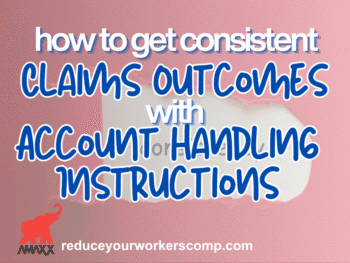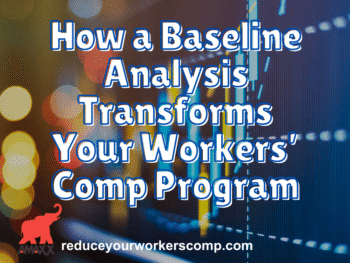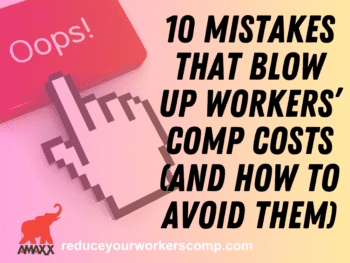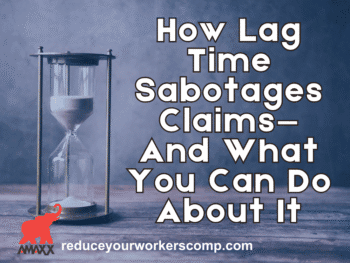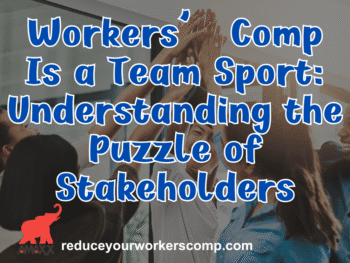Choosing The Right Assessment Tools In the world of work comp (or workman’s comp in another time) we have a saying: “You don’t know what you don’t know.” Think about that and what a dangerous position you might be in. It’s sort of like walking in a forest and not knowing there’s a tiger on your trail, so you don’t take action because – – “you don’t know what you don’t know.” Reigning in out-of-control workers’ compensation costs means first you must understand what’s going wrong in your organization, but you need to pick the right assessment tool. There are several ways to gather key information, each with pros and cons. 9 Assessment Tools – Pick One or a Combination 1. Self-evaluation questionnaires are useful because they can be developed and sent to managers, claims handlers, treatment providers, and attorneys retained to handle workers’ compensation cases. Questions can be open-ended, requiring a real answer, (not “yes” or “no”) to encourage a response indicating how effective the respondent really believes a certain practice or procedure to be. The drawback is questionnaires require more time for company personnel to complete, and written answers may not be candid since no rapport with the questioner can be developed. The questions need to be complete enough to obtain the right information but simple enough so respondents actually answer them. 2. Telephone interviews can serve as a follow-up to self-evaluation questionnaires or can replace them. During a telephone interview, the interviewer can gather more information because the process is interactive. Drawback: Phone interviews are more expensive than questionnaires. 3. On-site interviews are probably the most effective way to elicit accurate information. Interviews can be detailed enough to enable each manager to express ideas on the key cost drivers and possible reduction solutions. Who should be interviewed? Talk to the safety, finance, operations and risk management departments, inside and outside medical providers, claim handlers, workers’ compensation attorneys, and union officials. Group interviews are efficient. They can be followed up by brief individual interviews as necessary to elicit sensitive information not necessarily divulged during a group meeting. 4. Focus groups of employees can reveal their understanding of how the workers’ comp system works, how injured workers are treated, and what steps can be taken to improve the system. Is the workers’ compensation system being used to resolve human resource problems? Are employees angry or frustrated, and just using workers’ compensation as a vehicle to express their frustration with the job, or are they really injured? NOTE: (Some special rules may apply to focus groups in a unionized work environment.) 5. Review of documentation means examining written work comp policies, forms, employee brochures, pamphlets and newsletters. This shows what written procedures are in place and how well they are being implemented. Look at the total program. Are communications written at a 6th grade level and translated into languages other than English if appropriate? 6. Review of the loss data will show loss causes, allocated expense ratios and percentage of medical versus percentage of indemnity costs. This will help pinpoint key cost drivers. 7. Physical review of claim files, both open and closed, reveal the quality of file handling in the past. A physician reviewer and experienced claim representative can determine whether medical care is well coordinated and of good quality, whether medical bills are reviewed for duplication and fee-schedule compliance, whether strategies for claim closure have been developed and followed, and whether time out of work is proportionate to the degree of disability. (workersxzcompxzkit) 8. Overlap of other disability policy payments must be ferreted out as well. In general, the reviewer should assess whether file handling is proactive or reactive, and whether it is properly focused on rapid claim closure. 9. Web-based application quickly obtains uniform information from many divisions or one division. And the completion time is less than 1 hour instead of 6 months so a company can get their cost containment changes started much sooner; they can start saving money sooner. Workers Comp Kit® is an application where companies can measure best practice performance. Check out the 2009 RIMS Benchmark Survey’s WC Best Practices to find out what percentage of companies have implemented the top 10 workers’ compensation best practices. Multiple divisions from across the country, or the world, can log on during one week, and the risk manager will have the results instantly. Which assessment methods are best for your organization? It depends on how large your organization is, your budget and many factors. The most important thing, however, is to get started and use one or more of the methods above. As you learn more, you can refine your approach. Author: Rebecca Shafer, J.D. consults for mid-market and national accounts focusing on project management, risk management assessments, data review, benchmarking, and development of Workers’ Compensation and Injury Management Programs. Projects focus on development of training and education programs, document design, evaluation and integration of insurance claims administration and TPA services. Contact her are: RShaferB@ReduceYourWorkersComp.com
Do not use this information without independent verification. All state laws vary. You should consult with your insurance broker or agent about workman’s comp issues.


